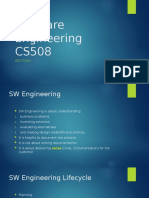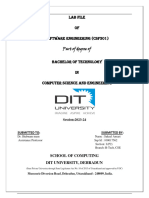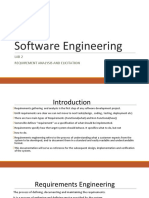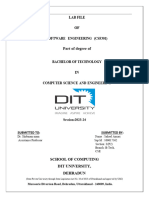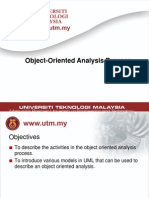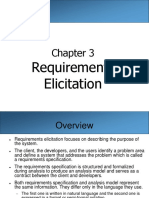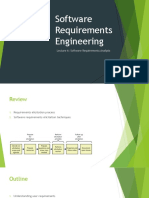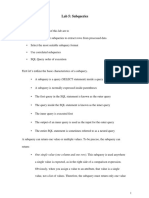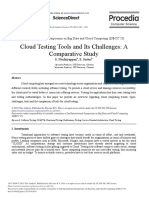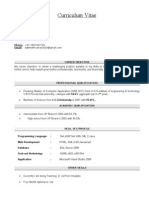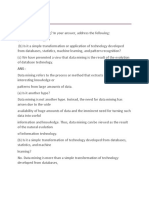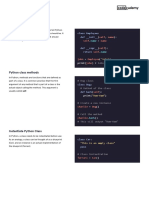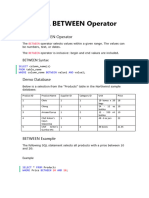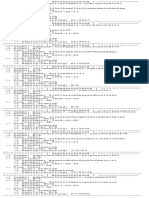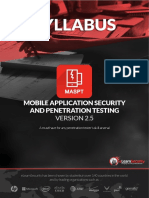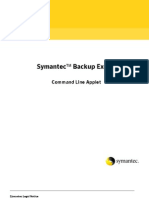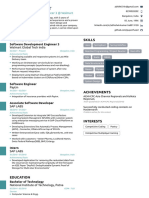0% found this document useful (0 votes)
117 views27 pagesSoftware Engineering (Week-3)
This document summarizes the agenda and content covered in Week 3 of a software engineering course. The agenda includes a case study discussion on a banking system, assignment discussion, a quiz, and lectures on requirement engineering and requirement analysis using structured analysis. The banking system case study describes the functional requirements and workflow of an ATM system. Students are assigned to create an agile development plan for the case study using user stories, iteration plans, and test-driven development. The document also covers what requirements are, types of requirements, and structured analysis modeling using data flow diagrams.
Uploaded by
Zeenat SiddiqCopyright
© © All Rights Reserved
We take content rights seriously. If you suspect this is your content, claim it here.
Available Formats
Download as PPTX, PDF, TXT or read online on Scribd
0% found this document useful (0 votes)
117 views27 pagesSoftware Engineering (Week-3)
This document summarizes the agenda and content covered in Week 3 of a software engineering course. The agenda includes a case study discussion on a banking system, assignment discussion, a quiz, and lectures on requirement engineering and requirement analysis using structured analysis. The banking system case study describes the functional requirements and workflow of an ATM system. Students are assigned to create an agile development plan for the case study using user stories, iteration plans, and test-driven development. The document also covers what requirements are, types of requirements, and structured analysis modeling using data flow diagrams.
Uploaded by
Zeenat SiddiqCopyright
© © All Rights Reserved
We take content rights seriously. If you suspect this is your content, claim it here.
Available Formats
Download as PPTX, PDF, TXT or read online on Scribd
/ 27
